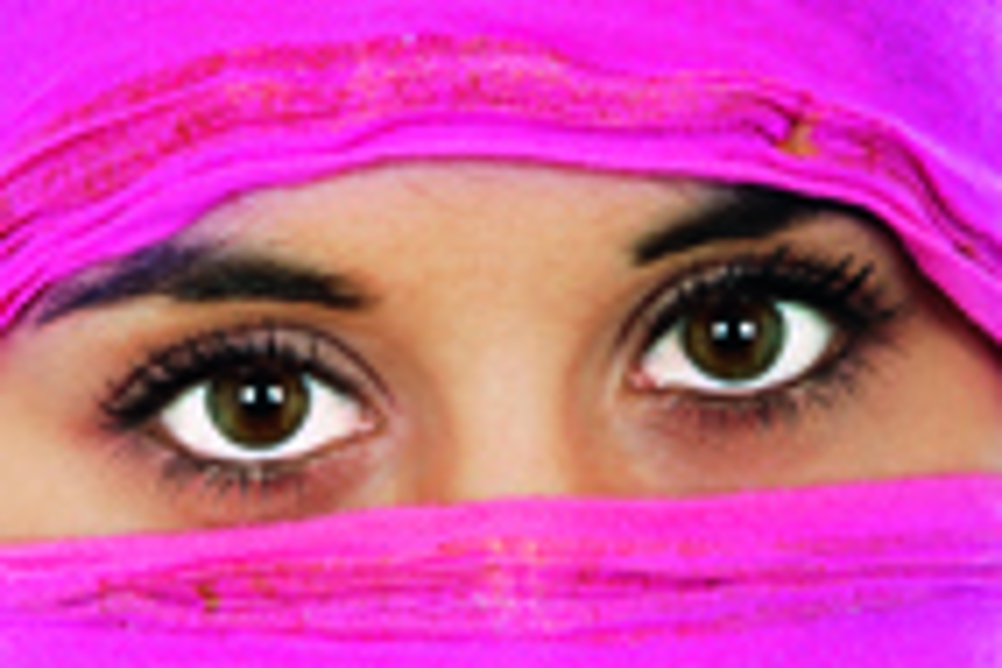
The EYFS clearly lays out the importance of everyone receiving a friendly welcome in a nursery setting and staff working in close partnership with parents. This relationship should be founded on mutual respect with a positive attitude toward ethnic, cultural and social diversity. But some settings have found that the wearing of a niqab, a Muslim headscarf (see box) obscuring the face, can pose a challenge for practitioners.
The national media recently reported how a mother was escorted off school premises for refusing to remove a veil for religious reasons, and childcarers have expressed safety concerns over identifying adults wearing a niqab before allowing them to enter the nursery premises, or collect children.
This dilemma must be treated with sensitivity at all times. 'It is important to be respectful of parents' wishes,' says Purnima Tanuku, National Day Nurseries Association chief executive. 'While a nursery must ensure that a child is being picked up by the right person and safety is always paramount, building a position of trust with a parent who may choose to wear a niqab or burqa is key.'
Positive ID
When registering a child, the nursery's policies must be made clear to parents, regardless of their culture. This is an ideal time to explain that it is important to ensure only authorised individuals collect their child. If the parent is wearing a niqab, then it should be sensitively asked whether they would be happy to raise the covering for identification purposes.
Jane Lane, advocate worker for racial equality in the early years, comments, 'I do not think the issue of whether the wearing of the niqab or burqa is required by the Qur'an is relevant in these cases. The fact is that a woman is covering her face for a reason - cultural, religious or whatever. If a veil is asked to be removed for identification or other purposes, this should be done, wherever possible, by a woman and in as private place as possible. In a childcare setting it is very unlikely that a woman is not available to ask this question. It would be totally unacceptable, from the point of view of the wearer of the niqab or burka, to be asked to remove it for identification purposes by a man.'
If a man registers the child, then issues of identification should also be raised, and a question posed as to whether there may be an issue of recognition if a woman comes to collect the child.
Fully covered
A member of the Muslim civil liberties group Muslim Public Affairs Committee UK, who is a teacher in a nursery school in Tower Hamlets, London, has experience of working with mothers who wear a veil that covers their whole face except the eyes. 'This has never proved to be a barrier in communication with staff or for ID purposes, because it is quite easy to identify individuals from their eyes,' she says.
'Some mothers do choose to remove their face veils within the nursery without being asked - but it wouldn't be appropriate to request this. In the very rare case of mothers who wear a face veil that also covers the eyes, I believe it would be reasonable to request they reveal their face, or at least their eyes, to a female member of staff for ID purposes.'
If a woman is not happy to reveal her face, there are other ways to positively identify her. A signature, ID number or secret password could all suffice. Jane Lane adds, 'It needs to be recognised that familiarity and the passage of time are likely to make identification easier - familiar voice and eyes. An apparent problem may soon cease to be so.'
TERMS
Burqa: Two different items of traditional women's clothing are known as burqa. One is a kind of veil which is tied on the head, over a headscarf, and covers the face except for a slit at the eyes for the woman to see through. The other, which is also called a full burqa, is a garment which covers the entire body and face. The eyes are covered with a 'net curtain' allowing the woman to see but preventing other people from seeing her eyes. Both kinds of burqa are used by some Muslim women as an interpretation of the hijab dress code.
Hijab: The linguistic employment of this very general term is as a noun referring to a 'cover, wrap, curtain, veil, screen, (or) partition'. More generally, Muslims refer to the 'hijab' as:
- a simple headscarf
- the entire garment a woman wears in front of strangers that covers her whole body, excluding her face, hands and (for some) feet, in loose, opaque and non-distinctive clothing
- the philosophy of dressing and acting modestly.
Jilbab: This is a long outergarment leaving only the hands, face, and sometimes the feet uncovered.
Naqab (or niqab): This is a face cover.
Extract from 'The Muslim Faith and School Uniform: Wearing the Hijab and other Islamic Dress in Schools', National Union of Teachers, www.teachers.org.uk









